BOAS Airway Clinic
BOAS, or “Brachycephalic Obstructive Airway Syndrome” is a disease of the upper airways, predominantly found in brachycephalic or short faced animals.
The term Brachycephalic means “short skull” or, by definition, where skull width is greater than 80% of its length. There are many different brachycephalic breeds of dog, varying in shape and size from the smallest pom to the larger mastiff.
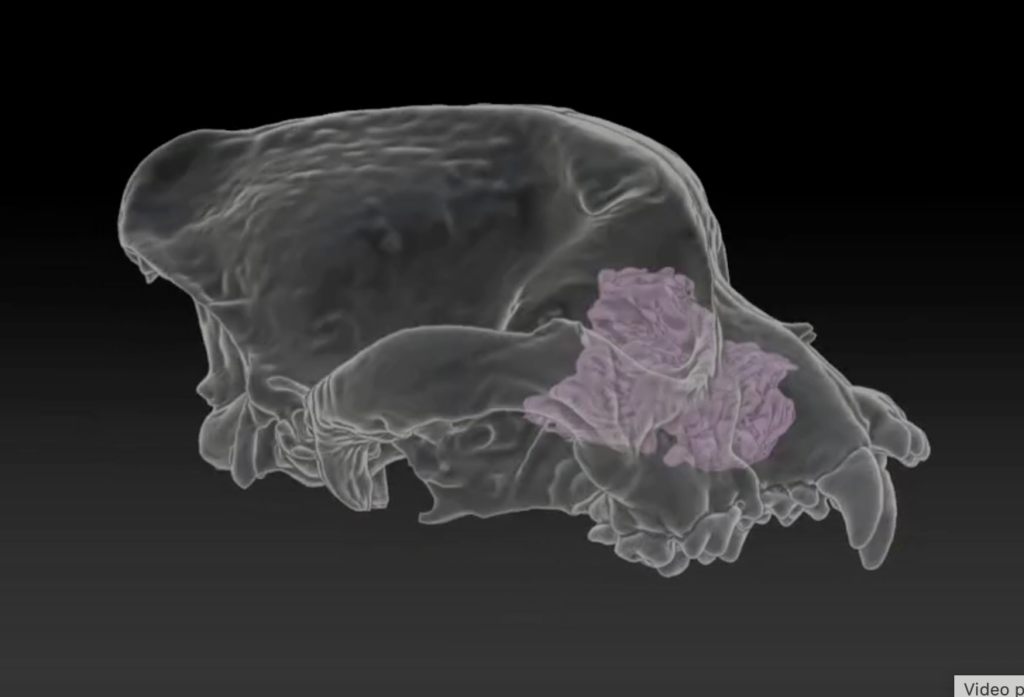
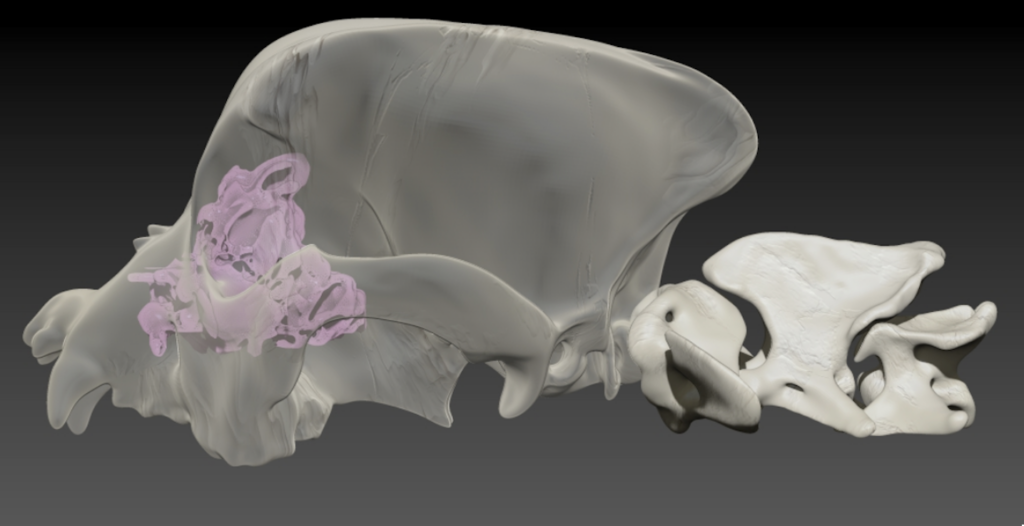
Over the last decade there has been a huge increase in popularity of three main breeds, Bulldog, French Bulldog and Pug. All three now being in the top 10 registered breeds in the UK.
There has also been a lot of media attention, veterinary and scientific interest over the last few years due to health and welfare concerns relating to breathing.
Here at Granta Veterinary Specialists, we have two clinicians, Dr Jane Ladlow and Dr Jackie Demetriou, both European Soft Tissue Specialist Referral Surgeons, who have researched extensively in these breeds. Working closely with fellow Universities, Breed Clubs, Kennel Clubs and vets we aim to improve the lives of future generations of brachycephalic dogs.
For affected dogs we offer a full diagnostic assessment, working closely with owners with a longer term follow up.
Sign and symptoms
There is increased awareness of BOAS amongst some owners, but many symptoms are still seen as ‘breed traits’ or ‘normal’ for the breed. Early recognition of symptoms can help to slow down disease progression and allow early treatment of airway disease.
BOAS is also a complex condition and not all dogs will have all signs, in fact the issues can vary between breeds. To understand the disease components of BOAS it’s important to understand the upper airway anatomy of the dog.
Dogs are obligate nasal breathers when resting. Air enters their nostrils or “nares” at the top when breathing in. (nares picture) It then passes through the nasal cavity which houses small membrane covered bony structures called turbinates. These warm and humidify and filter the air as it passes through to the next area, the nasopharynx. The nasopharynx is the upper part of the throat behind the nose. It lies above what is known as the soft palate. The nasopharynx connects the nose and throat. It leads to the trachea (wind pipe) and oesophagus (food pipe). Air passes through the larynx (voice box) to get to the trachea and ultimately the lungs.
In theory, air should pass through these areas without obstruction.
In brachycephalic dogs the foreshortened skull shape does not always allow enough room for the corresponding soft tissues (tongue and soft palate) and these can be overlong and thickened. Nostrils may be pinched (stenotic) and the turbinates within may also be over crowded or distorted. Some brachycephalics can also have a narrowed windpipe (tracheal hypoplasia) and a thickened tongue base.
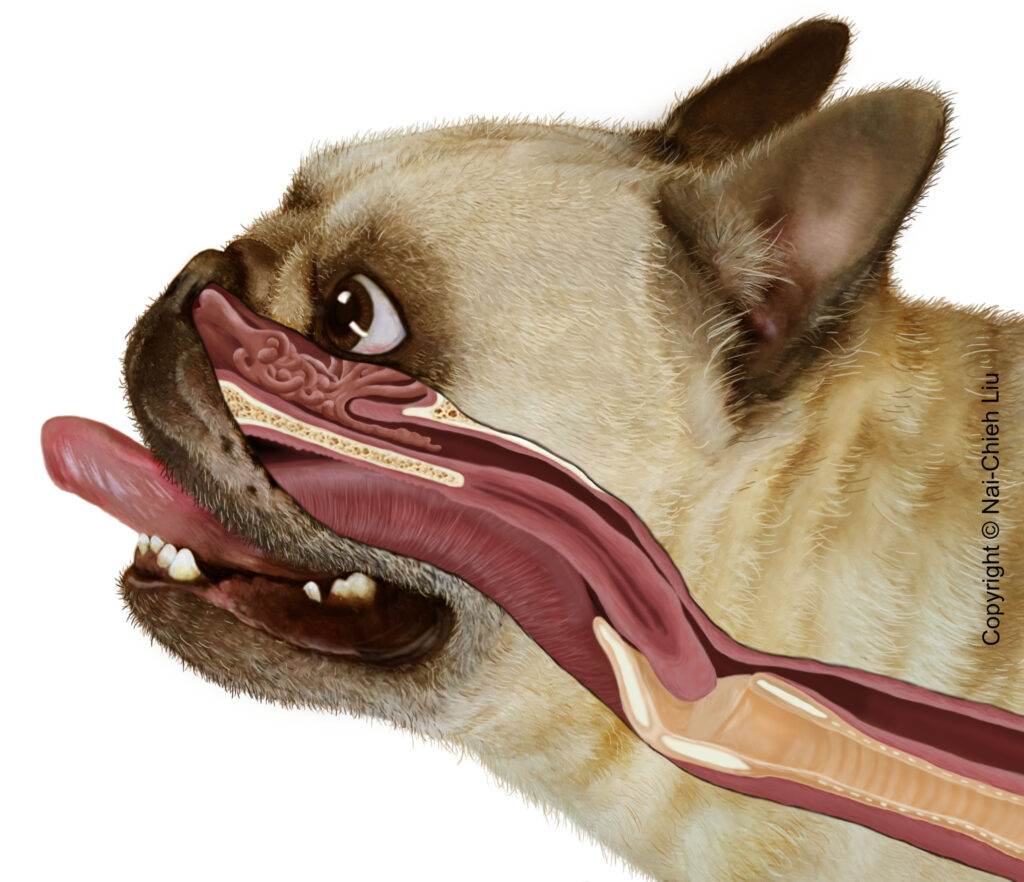
All these things cause increased obstruction/resistance to air. The dogs will have to work harder to keep their airways open and air flowing. If left unchecked, continuous wear and tear on the airways can then lead to irreversible secondary affects to the respiratory system and gastrointestinal system. BOAS can impair the dog’s quality of life making it harder to play, eat and sleep.Exercise intolerance and heat sensitivity
Exercise intolerance and heat sensitivity
Dogs use both their mouths (panting) and nose (heat exchange via the turbinates) to cool themselves down, as air moves in and out.
Any resistance to this airflow such as pinched nostrils and overcrowded nasoturbinates, a thickened palate exerting pressure from below, or even a small trachea can consequently mean that cooling is harder and therefore may take longer. This is why dogs suffering with BOAS switch to open mouth panting much faster than those without BOAS, even during normal exercise. BOAS can be worse in warm or humid weather with the danger of heat stroke. Left unchecked and exacerbated by weight, heat stroke can cause secondary swelling of the airways, increased temperature, cyanosis and death.
Noisy breathing
A small amount of nasal noise does not necessarily mean that your dog has BOAS. However it is a progressive condition so should be monitored. There are different types of noise that may cause an issue. The different types of noise may indicate problems in certain areas or ‘lesion sites’.
Stertor
This sounds like a rattle or a snore. Some dogs may do it only when excited or over exerted. Others may do it intermittently. It is the vibration of the soft tissues in the nasopharynx, pharynx or larynx and may be sign that the soft palate is over long or too thick. If the palate is too long, it will overhang the top of the trachea. When the dog pants, the palate gets sucked in and out of the trachea. They have to work much harder to try and get the palate out of the way so that air can pass through.
Stridor
A much higher pitched wheezing noise mostly heard on inspiration as air struggles to pass through the larynx due to narrowing or collapse. The latter being secondary to the continuous wear and tear on the laryngeal cartilage that supports and keeps open the larynx.
Snoring and nasal noise
Some BOAS free dogs will snore. This can often be influenced by the position they sleep in.
BOAS affected dogs tend to snore and snort continuously when asleep and awake. This may be caused by stenosis in the nose, especially inside. They may also snore quite loudly and often look like they are struggling to get air in when sleeping. They may even wake up whilst sleeping.
Whilst asleep, dogs use their noses to breath. Crowded turbinate bones and pinched nares in the nasal cavity makes air flow difficult. The nasopharynx (area between nose and throat) may also collapse with increase nasal pressure. Those with a collapsed nasopharynx heavily snort when awake (nasal steror).
Sleep disruption
Sleep disorders can be an indicator of airway problems. Sleep issues are often missed by owners as they occur at night. You may find that your dog sleeps a lot during the day and lacks enthusiasm to go for walks. In severe cases sleep apnoea can occur during which time they may not take a breath for up to 20 seconds, followed by a gasp that wakes them.
Sleeping sitting up or standing
Dogs with BOAS may find it hard to sleep in the normal lying down position. When their mouths are closed a thickened tongue or palate adds further pressure upwards on the nasopharynx. This impedes the movement of air. They are known to sleep sitting up, standing, with their heads raised on objects or even sleep with objects (toys) in their mouths as this opens the airway.
Dysphagia, vomiting, regurgitation and flatulence
It is not unusual to find concurrent symptoms that seem unrelated to the airways but are in fact secondary to airway disease. Some dogs struggle to eat as they have to ‘come up for air’. If the soft palate is too big it may block the oesophageal opening, impeding swallowing. If they eat too fast, the palate may get stuck in the trachea. They may ‘hack’ a lot during and after meals.
The long-term effects of BOAS, the continuous negative pressures on the airways can have secondary effects on the stomach. These pressures result in oesophageal reflux, excessive gastric acidity and hiatal hernia where the stomach get sucked in to the chest or herniates. This can be permanent or can be intermittent. It can lead to vomiting and regurgitation.
Regurgitation can be very subtle without obvious food production, this is known as silent regurgitation. Belching and swallowing or licking can indicate silent regurgitation.
When dogs find it difficult to eat or swallow, excess air may be gulped. This can lead to flatulence. They may also be at higher risk of aspiration of food and water and subsequent lung damage.
Reverse sneezing and gagging
Although not confined to brachycephalic dogs, reverse sneezing and gagging can be an indication of the dog’s soft palate being too long.
How can Granta help with BOAS?
Once you have been referred to us by your vet an appointment will be made for you to come and meet one of the BOAS team.
What we offer
- Full assessment including whole body barometric plethysmography and functional grading
- Imaging including 64 slice spiral CT Scanner and rhinoscopy
- State of the art treatments including minimally invasive turbinectomy
- One to one round the clock 24-hour specialist care
- Dedicated veterinary anaesthetist with comprehensive monitoring
- Individual care plan suited to owners’ financial situation
BOAS grade
We start with an initial consultation where we discuss your dogs’ history and go over what the main areas of concern are. Your dog will then undertake a short three-minute exercise test at 4mph with a trained assessor. No dog is forced to complete the test if they are having difficulties or have other underlying health issues. You are also welcome to join the assessor.
Recordings and observations are made before and after the exercise in order to give you a functional BOAS grade. We can then advise you on the best options going forward surgery wise.
After admission we carry out a non-invasive whole-body plethysmography test on your dog whilst awake.
This gives a BOAS score out of 100. They sit comfortably in the box so we can get what is called a ‘trace’. The trace is like a graph of your dog’s breathing and can give the vet further information on the extent and type of obstruction. We use this non-invasive test after surgery as well to see assess change/improvements.

CT Scanner
The morning after admission, your dog will be anaesthetised and then go for a CT using our 64 Slice Spiral CT Scanner.
The CT gives us a much clearer picture of what surgery may be needed. We specifically look at the head, thorax and stomach. It will show whether there are overcrowded or distorted turbinates. We can measure the palate and tongue thickness and length. Tracheal diameter will also be measured. Secondary issues can also be looked for including hiatal hernia, aspirational pneumonia, lung damage and torsion.
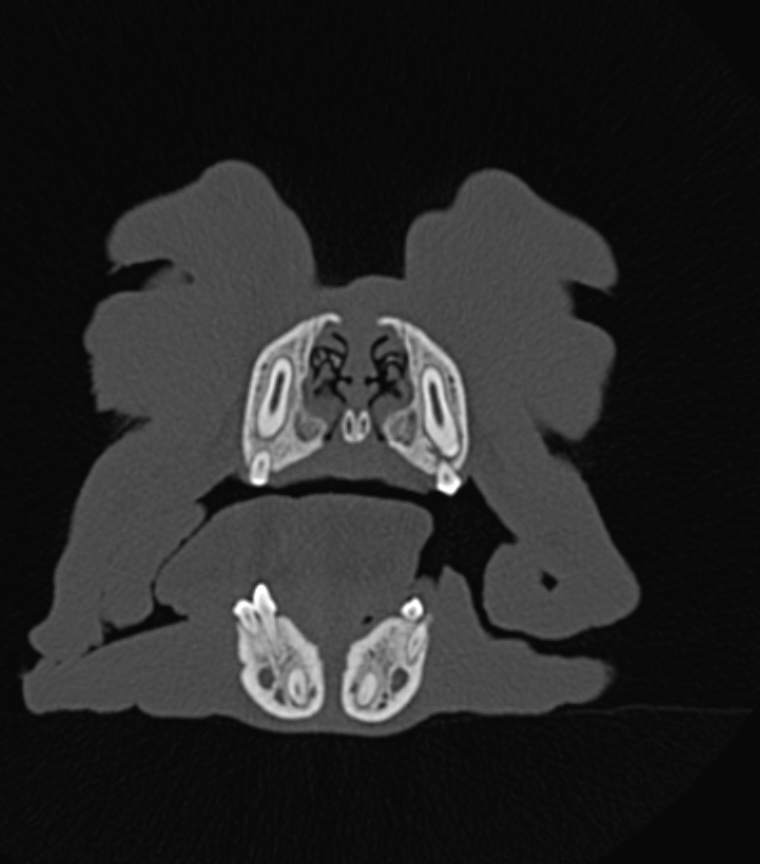
Rhinoscopy
Following the CT the vet will get a better view of what is going on inside the nose by perfoming a rhinoscopy. This a quick but excellent way for the surgeon to see just how crowded the nasoturbinate bones are. If there is an issue with these that may be affecting breathing your dog may need a turbinectomy at a later date. This is usually done about twelve weeks after the other surgery. We prefer to stage the surgeries as we find dogs have a better recovery. We also like to see how well your dog improves after conventional surgery.
For some dogs with milder nasal obstruction we may use nasal coblation which is a minimally invasive method of reducing the nasal turbinates which is done via the scope.
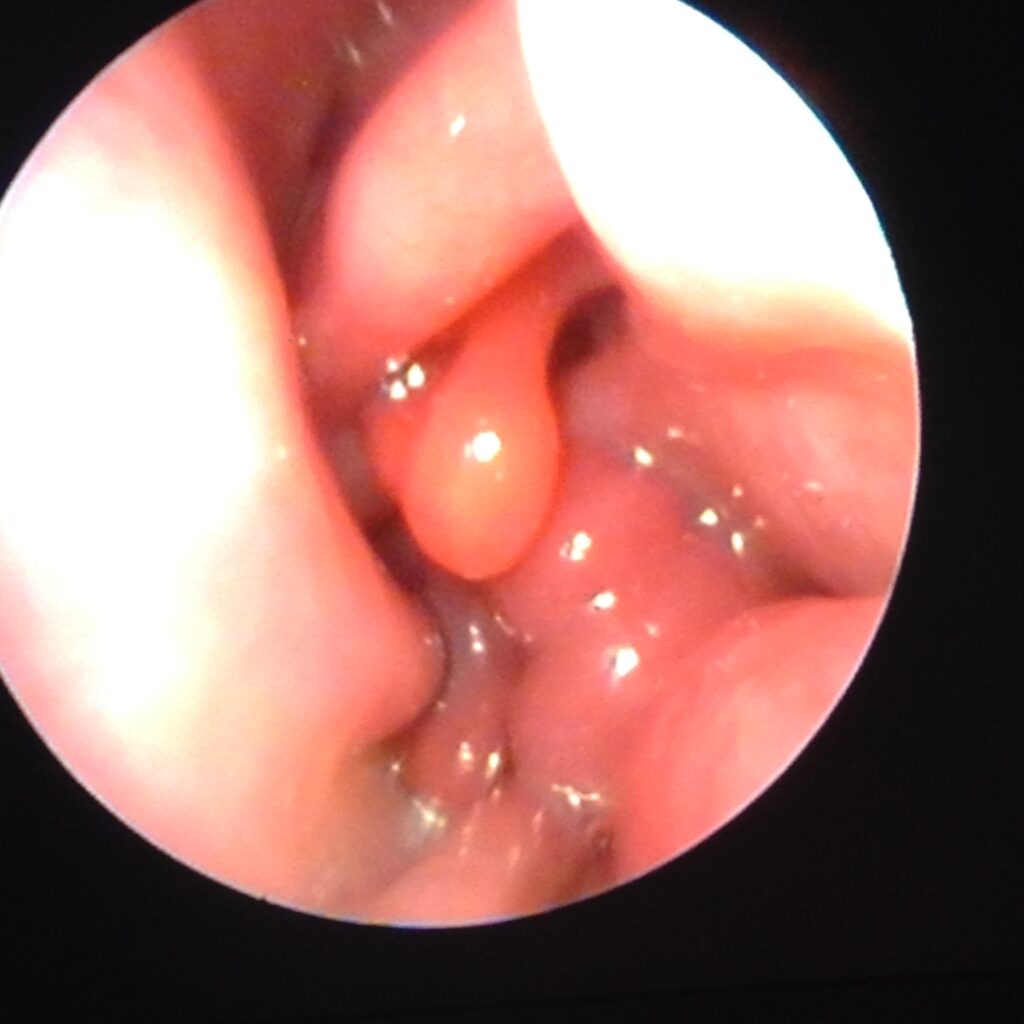
BOAS surgery
- Tonsillectomy; The tonsils are often quite swollen and may impede airflow especially when the dogs mouth is closed. We normally remove these using bipolar scissors.
- Folding flat palatoplasty to shorten and thin the palate or staphylectomy if the palate is not thickened.
- Laryngeal Surgery; There may be secondary collapse in your dog’s voice box area (larynx). Between the vocal cords in the wall of the larynx are two small soft round structures called laryngeal ventricles/ saccules. Continuous high inspiratory pressure in the airways can cause these to evert into the lumen of the larynx, blocking air flow. In cases of laryngeal collapse we also perform the following to reduce the amount of tissue that can be sucked in to the airways.
- Nasoplasty; Resection of the alar folds by Trader’s technique (alavestibuloplasty).
- Temporary tracheostomy; if we are worried about a particularly difficult recovery, we may place a tracheostomy tube. This will be removed once we are happy they can support their own breathing. In very severe cases there may be the need to perform a permanent tracheostomy.
- Laser turbinectomy; If your dog has a mainly nasal obstruction or does not respond sufficiently to the first surgery we will offer laser tubinectomy to decrease the nasal tissue and improve nasal airflow. This is a minimally invasive procedure using the nasal scope and often can be a day patient procedure.
Recovery and post op care
Your dog will be closely monitored in intensive care by an anaesthetist and specialist nurse on a one to one basis until fully recovered. Once returned to wards a dedicated nurse follows our post op brachycephalic protocol. This includes regular cardiovascular observations, pain scoring, individual care plans and nebulisation, liaising closely with the anaesthetists and clinician overseeing the care.
Discharge
We aim for your dog to be home with you the same or following day, depending on severity of disease and recovery. Until that time, we will give you regular updates.
Post-operative monitoring
It’s important that we check your dog and make sure that they have improved post surgery. We will do this 9-12 weeks post-surgery. If we are not happy with your dog’s progress we may suggest other procedures.
BOAS Club
We would like to check your dog yearly and ensure progress is maintained. If you join our BOAS Club we will offer two days a year when we assess your dog free of charge, if these days are not suitable for you we will still check your dog for you but there will be a charge.
BOAS surgery FAQs
Not usually.
We like them to settle in overnight or come in early for surgery. For dogs that are frequent regurgitators, we also like to them to have medication beforehand to lower any risks of this during surgery.
We also prefer to do surgery in the mornings. This allows the rest of the day to be monitored in our intensive care.
There may also be reasons why we would prefer your dog to be booked in on a different day for surgery. If they are very over-weight, we may ask you to get some weight off them as this will make them fitter for surgery.
We will not know the full extent of the BOAS issues until we anaesthetise your dog. There is not a one surgery fits all model. The different breeds may present with different issues.
Here at Granta we pride ourselves for our world class diagnostic and surgical procedures for brachycephalics, being at the forefront of research and medicine.
BOAS assessments
What we offer
- Private Assessments for both pet owners and breeders.
- Pre and post op assessments.
- Functional Grading scheme (non-invasive exercise tolerance test).
- BOAS scoring using non-invasive whole-body plethysmography box.
- Expert post assessment management advice.
- Official Kennel Club Respiratory Function Grading Scheme Assessments
- Assessor training for RFGS by the KC Chief assessor Dr Jane Ladlow
What happens at an assessment?
When you arrive at our Small Animal Referral Centre, reception staff will let one of the BOAS team know you are here.
We start by asking you to fill in a short questionnaire. This asks questions about your dog’s lifestyle and breathing.
There are two tests that we carry out; functional grading and non invasive whole-body barometric plethysmography.
Functional grading
Functional grading of BOAS is a means of assessing your dog before and after exercise. The result will show whether your dog has BOAS, its severity or whether BOAS free. This will give you an idea as to whether they may need surgical intervention or conservative management such as weight loss.
Your dog needs to be as relaxed and calm as possible, so if stressed from the journey we will allow them a period to calm down.
Initially before the exercise we will listen to your dog’s larynx by placing a stethoscope to one side of it. We will also listen to their chest.
We take your dog for a three minute trot (about 4mph). We are happy for you to trot your own dog. We make visual observations along the way. Toilet stops are allowed and no dog is forced to complete the test especially if they get into respiratory distress.
Immediately after exercise we listen again to the larynx and chest for comparison.
The assessor will then give you a functional grade.
- Grade 0 – Clinically unaffected. Free of respiratory signs; annual health check is suggested if your dog is under two years old.
- Grade 1 – Clinically unaffected. Mild respiratory signs of BOAS but does not affect exercise performance. Annual health check advised if your dog is under two.
- Grade 2 – Clinically affected. Your dog may benefit from surgical intervention. If they are overweight, weight loss may also be an option.
- Grade 3 – Clinically affected with severe symptoms. Your dog needs to see a vet and have surgical intervention. You should never breed from your grade three dogs.
Non invasive whole-body barometric plethysmography
This is a non invasive method of assessing how well your dog is breathing.
It involves your dog sitting calmly in a large ventilated plastic box that measures pressure changes as your dog breathes in and out. After 20 consecutive breaths we get what is called a flow volume trace. For surgical cases this also helps highlight anatomically where the obstructions may be in the airway.
The WBBP allows us to give you a BOAS score out of 100.
Kennel Club Respiratory Function Grading Scheme
Currently designed for Pugs French Bulldogs and Bulldogs, this scheme was launched in February 2019.
A massive step to improve the health of these breeds and reduce the number of dogs suffering with BOAS.
Any pug, Frenchie or bulldog, whether KC registered or not can take part in the scheme.
Here at Granta we are lucky to have the chief assessor Jane Ladlow. Jane also offers training of vets who would like to become assessors.
If you would like your dog assessed, a full list of assessors by region can be found here:
https://www.thekennelclub.org.uk/health-and-dog-care/health/getting-started-with-health-testing-and-screening/respiratory-function-grading-scheme/
If you are a vet and would like to become an assessor please contact Jane directly.
More detailed information on the scheme can be found here:
https://www.thekennelclub.org.uk/health-and-dog-care/health/getting-started-with-health-testing-and-screening/respiratory-function-grading-scheme/
Finding a puppy that breathes well
Although there are no guarantees that your brachycephalic puppy will not have future breathing problems, there are some measures you can take to try and reduce the chances when choosing a puppy.
Do your research!
Never buy from internet free ad sites or unscrupulous breeders as these are quite often poorly bred, illegal imports and sourced from puppy farms.
Once you have decided what breed you want, contact the breed clubs. (links)
Choose a Kennel Club Assured breeder that currently tests their breeding dogs under the KC RFG Scheme.
Good breeders rarely have litters, so be willing to wait. Once you have chosen your breeder, get to know them and their dogs. A good breeder will ask you as many questions about yourself as you do about them.
When you go to choose your puppy, make sure you meet pups with mum. Ask to see dad as well. See what their breathing is like. Avoid choosing puppies from dogs who have obvious noisy breathing.